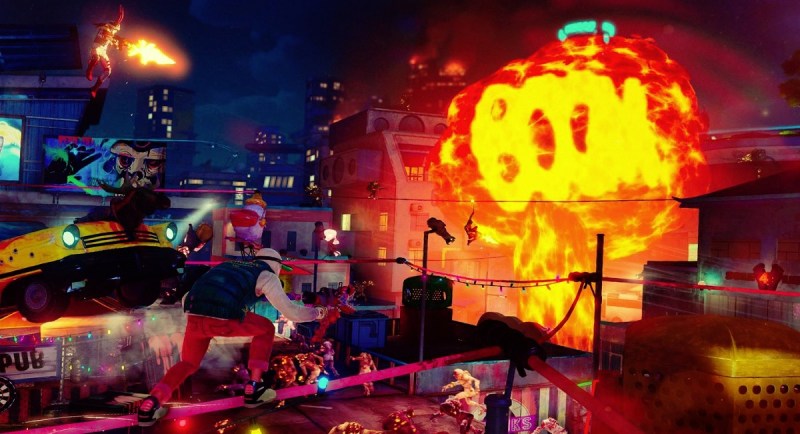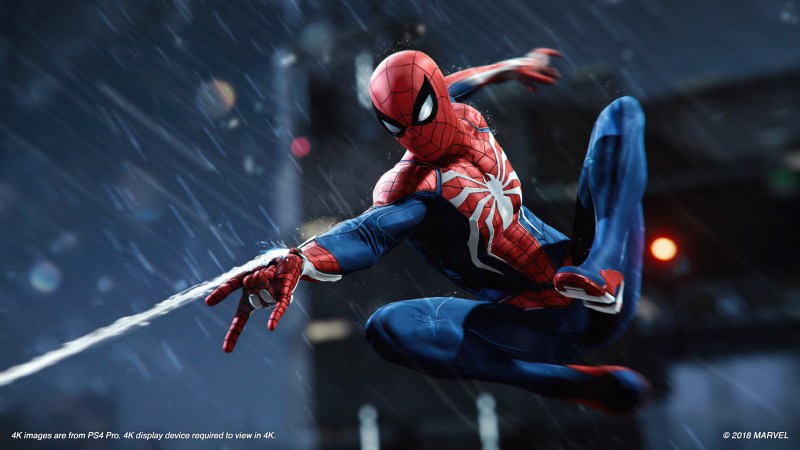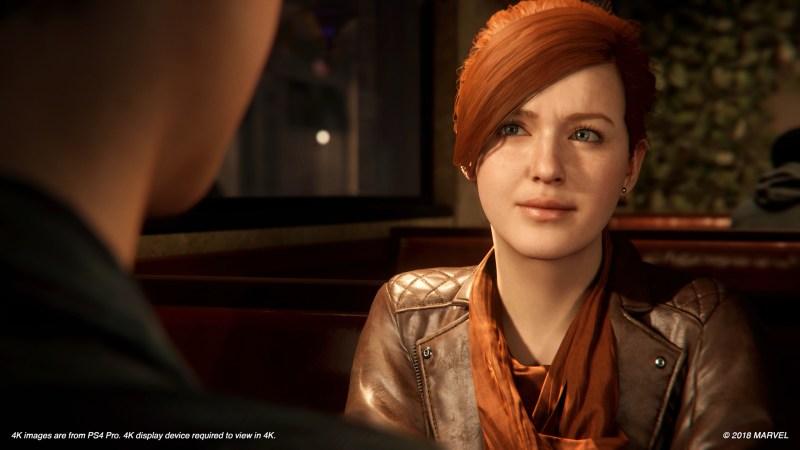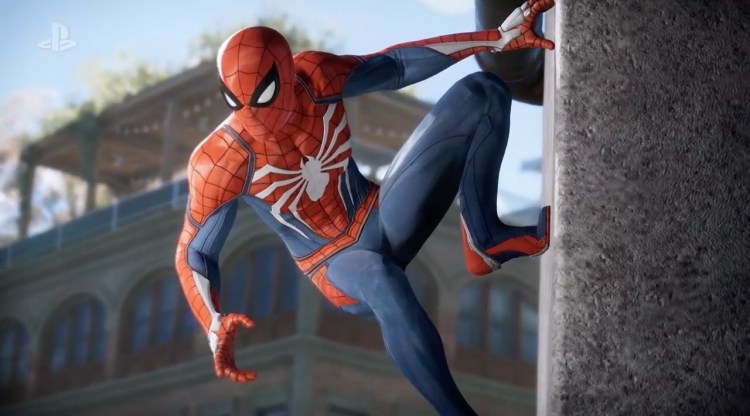
Above: Resistance
GamesBeat: How many people are you at now?
Price: Right now we have around 260 across our locations.
GamesBeat: Is that a peak for you? Have you gone up and down over the years?
Price: We’ve been relatively consistent. We’ll build up a bit in production. It just depends on the projects we’re doing. I think what’s important here is that we have an amazing retention at Insomniac. Our leadership team, the average has been here more than 14 years. One third of Insomniac has been here more than 10 years. Across all of Insomniac our average tenure is more than six years. I think that puts us in the 99th percentile of the industry.
That has a lot to do with, again, our culture and our interest in having everyone participate in not just the creative process, but also our production process. We ask everyone, “What do you think about how things are going? How can we improve?” We’re not afraid to make changes to our structure and our process to try to decrease barriers to creativity for everybody working on the games.
GamesBeat: You’re at an interesting scale. How do you fathom something like Rockstar, though, with 3,000 people contributing to Red Dead Redemption 2?
Price: That’s a lot of folks. I think every developer has the challenge of balancing scope and expectations. There are a lot of ways that you can approach it. We like to rely on a lot of planning. We try to contain our scope for our games to the things we think players are most passionate about. We make some calls on what is most important and what isn’t. We’ve learned the hard way that if you try to deliver the kitchen sink, it’s a daunting challenge. Some companies can do that. We like to focus on our story-driven open world games and really understand what gets players exciting and double down on those things.

Above: Sunset Overdrive debuted on the Xbox One in 2014.
We also, as technology advances–we’ve made an investment in proceduralism as well. There are production techniques we use where we leverage the tools that we create that are procedural, or outside tools like Houdini or the Allegorithmic Substance library. That saves us time and creates more time for innovation within the games themselves.
GamesBeat: After Spider-Man’s success, how have you looked back on that? It’s interesting that there was this discussion about whether single-player games are dead while you guys were making that. It’s an open world, a very different kind of single-player, but there’s that big discussion at EA about that. Things like Anthem are coming out. What did you think about all those things that were in the mix as you were making Spider-Man?
Price: Can you ask that again?
GamesBeat: I assume you don’t think single-player games are dead.
Price: No, we don’t. I’ll give Sony a lot of credit for being willing to continue driving forward with story-driven single-player games. If you look at God of War, for example, it’s a fantastic example of a well-done single-player game. Fans responded. Obviously Spider-Man is another example, and there are several other examples from Sony first-party.
We’ve done multiplayer games. We’ve done cooperative games in the past. I think there’s absolutely a place for those, a place for those mechanics in many franchises. It just depends on what you as a team feel fits the game the best.

Above: Spider-Man can probably afford rent now.
GamesBeat: Where do you feel you are as a game creator now?
Price: Personally? Still learning. Every single day, no question about it. What’s fantastic about this industry, and one of the reasons we as a company have been around so long, and so many Insomniacs have stayed for so long–this industry is constantly evolving. There’s never a dull moment where you don’t feel like there’s a new hill to climb or something new to discover.
I think a lot of that’s driven by players, who have an insatiable desire to be surprised with new takes on gameplay, new takes on story. Given that we are players as well, we feel that energy doubly, because we love creating and exploring and discovering, but at the same time we want to play games that are surprising us. It’s a great place to be, not only in this time but in this industry. We have amazing tools. We have amazing opportunities. We have fans who are incredibly enthusiastic and want to see more. It’s up to us to create and to do something that isn’t an opportunity in many other industries. It’s pretty incredible for us.
GamesBeat: What kind of games do you still want to make?
Price: Open world story-driven games have obviously been something we’ve focused on, but for us at Insomniac, games that have a positive message are generally the kinds of games that we gravitate to. When I talk about a positive message, usually that involves having stories–characters that are encountering some sort of difficulty and have to overcome adversity as an underdog when they think maybe it’s not possible.
We like telling those kinds of stories because it reflects who we think we are. You mentioned the difference in size between Rockstar and Insomniac. The scale is pretty large. We’ve had to be scrappy from the very beginning and get creative and collaborate very closely to take on much larger teams and deliver the kinds of stories and worlds that fans love. Naturally we gravitate toward telling those kinds of stories.
GamesBeat: What’s your reaction when people say that Spider-Man is the best game you have ever made?
Price: We’re flattered. I can speak for all of Insomniac. It’s humbling and flattering to hear those kinds of compliments. We really appreciate it.
GamesBeat: You wouldn’t quibble with that?
Price: [Laughs] We’re proud of all the games we’ve made. I’ll say as well that–we’ve been blessed to be able to create so many different types of games. Different characters, worlds, mechanics. Every game we have made has been a learning experience for us, an opportunity to build new muscles, even if the game is within the same genre as something before.
I know that here occasionally I’ll get asked, what’s your favorite Insomniac game? The answer is usually all of them, because all of them have had incredibly joyful moments during production, or during preproduction, or after release. I can look back and think, “Those were amazing moments.” The time when we were all gathered around someone’s desks looking at a new mechanic, or looking at one of the cinematics in the game, or we were all collaborating on solving a problem. Those, to me, are the kinds of moments that make this industry so special.

Above: Mary Jane and other Spidey friends are here.
GamesBeat: What did you think of your foray into VR? Where do you think that’s going in the future?
Price: We’re still in VR. We’re in production on Stormland. It’s an exciting game for us, because it’s one of the first open world VR games. We’ll be showing more of it soon to help players understand how far it’s come since the last time we showed it off.
With VR, one of the reasons we got into it was to build new muscles. I mentioned that before. It’s another opportunity for us to learn a different approach to design. We learned quite a lot. A lot of the assumptions we made about game design in VR were wrong at first. We had to figure things out pretty quickly. Given that this is our fourth VR game, we’ve taken those lessons from previous games, applied them, and now we’re pushing further. We’re doing more with locomotion, combat, and interface than we thought was possible when we started in VR. It’s pretty cool for us to see how we internally approach development evolving.
As far as the audience goes, clearly the audience is still evolving as well. We see the hardware manufacturers, Oculus in particular, responding to that. I’ve tried out the Quest and it’s a really cool piece of hardware, very impressive. For me, it changes how I think about VR.

